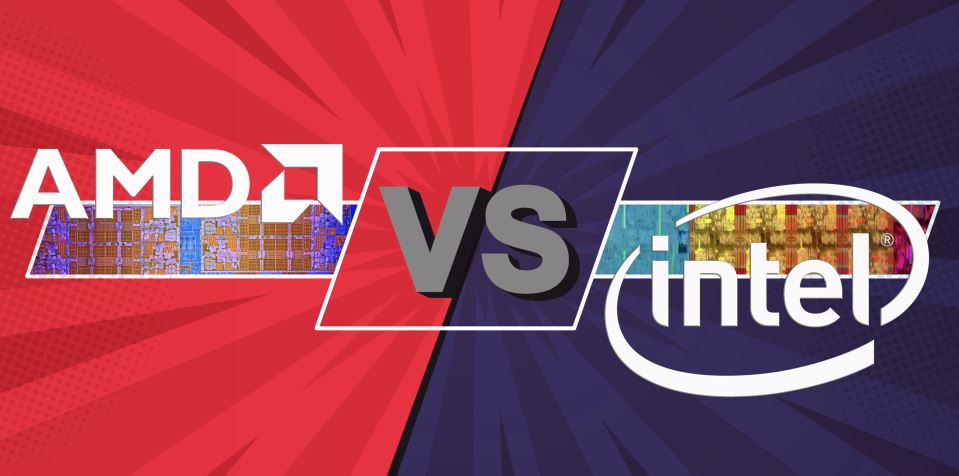AMD vs Intel for Streaming: Which Processor is Best?

Technifian.com - AMD vs. Intel: Unveiling the best processor for seamless video streaming.
Introduction
Hi Fian Friend! In today's digital age, video streaming has become a staple of entertainment and communication. Whether you're streaming your favorite shows, hosting live gaming sessions, or conducting business webinars, the processor powering your device plays a crucial role in ensuring a smooth and high-quality experience. This article delves into the debate between AMD and Intel processors, exploring which is better suited for streaming video.
Understanding the Basics of Processors for Streaming
What is a Processor?
A processor, also known as a central processing unit (CPU), is the brain of your computer. It executes instructions from programs, enabling your system to perform various tasks. When it comes to streaming video, the CPU handles the encoding and decoding of video data, impacting the overall streaming quality and performance.
Why Processor Matters in Streaming
The processor's performance directly influences your streaming experience. A powerful CPU ensures that video playback is smooth, buffering is minimized, and multitasking is seamless. Key factors include core count, clock speed, and thermal efficiency, all of which determine how well your system can handle video streaming tasks.
AMD vs Intel for Streaming: A Comparative Analysis
Performance Comparison: AMD vs Intel for Streaming
AMD Processors
AMD has made significant strides with its Ryzen series, offering high core counts and impressive multi-threading capabilities. For instance, the AMD Ryzen 7 and Ryzen 9 processors are known for their excellent performance in multitasking and handling demanding applications, making them ideal for video streaming.
Intel Processors
Intel's Core i7 and i9 series are renowned for their strong single-core performance and high clock speeds. These attributes are beneficial for tasks that require quick processing of individual instructions, such as video encoding during streaming.
Cost Efficiency: AMD vs Intel for Streaming
AMD: Value for Money
One of AMD's key advantages is its competitive pricing. AMD processors often provide more cores and threads at a lower cost compared to their Intel counterparts. This makes AMD a popular choice for budget-conscious users who still want robust streaming performance.
Intel: Premium Pricing
Intel processors typically come with a higher price tag. However, they offer premium performance, especially in single-threaded tasks. For users willing to invest more for top-notch quality and reliability, Intel remains a strong contender.
Integrated Graphics: AMD vs Intel for Streaming
AMD: Radeon Vega Graphics
Many AMD processors come with integrated Radeon Vega graphics, which can handle light gaming and streaming without needing a dedicated graphics card. This is particularly advantageous for users who want a simplified setup without sacrificing too much on performance.
Intel: Iris Xe Graphics
Intel’s integrated Iris Xe graphics provide strong competition, offering excellent performance for integrated solutions. While not as powerful as dedicated GPUs, Iris Xe graphics are more than capable of handling high-definition streaming tasks.
Power Consumption and Thermal Management: AMD vs Intel for Streaming
AMD: Efficient Multitasking
AMD’s Ryzen processors are known for their efficiency, especially in multitasking scenarios. They tend to consume less power per core, which translates to lower heat output and better thermal management, a crucial factor during long streaming sessions.
Intel: Performance at a Cost
Intel processors often operate at higher clock speeds, which can lead to increased power consumption and heat generation. However, with proper cooling solutions, Intel CPUs can maintain high performance without significant thermal throttling.
Real-World Scenarios: AMD vs Intel for Streaming
Streaming for Gamers: AMD vs Intel
For gamers who stream their gameplay, both AMD and Intel offer viable solutions. AMD's multi-core performance allows for seamless streaming and gaming simultaneously, while Intel's high single-core performance ensures smooth gameplay with minimal latency.
Professional Streamers: AMD vs Intel
Professional streamers who require top-tier performance might lean towards Intel for its reliable and consistent performance. However, AMD’s value proposition and impressive multitasking capabilities make it a strong contender for those balancing performance with budget.
Casual Streamers: AMD vs Intel
For casual streamers, AMD's budget-friendly options with integrated graphics provide a convenient and cost-effective solution. Intel's integrated graphics are also suitable, but users might find AMD’s offerings more compelling in terms of price-to-performance ratio.
Frequently Asked Questions about AMD vs Intel for Streaming
Which is better for streaming, AMD or Intel?
Both AMD and Intel have their strengths. AMD offers better value with higher core counts and efficient multitasking, while Intel excels in single-core performance and premium reliability.
Do I need a dedicated graphics card for streaming?
Not necessarily. Many AMD and Intel processors come with integrated graphics capable of handling streaming tasks. However, for higher-end streaming or gaming, a dedicated GPU can enhance performance.
How much RAM do I need for streaming?
A minimum of 8GB of RAM is recommended for basic streaming. However, 16GB or more is ideal for smoother performance, especially when multitasking or using additional software during streaming.
Does the processor affect streaming quality?
Yes, the processor plays a crucial role in encoding and decoding video streams. A more powerful CPU can handle higher quality streams with less buffering and latency.
Are there any specific models you recommend for streaming?
For AMD, the Ryzen 7 5800X and Ryzen 9 5900X are excellent choices. For Intel, the Core i7-11700K and Core i9-11900K are top performers for streaming tasks.
Conclusion: Choosing Between AMD and Intel for Streaming
When it comes to choosing between AMD and Intel processors for streaming video, the decision ultimately depends on your specific needs and budget. AMD processors offer excellent value with high core counts and efficient multitasking, making them ideal for a wide range of streaming scenarios. On the other hand, Intel processors deliver premium performance with strong single-core capabilities and reliable performance for professional and high-end streaming tasks. Both brands have their unique strengths, and understanding these can help you make an informed decision for a seamless streaming experience.
Post a Comment for "AMD vs Intel for Streaming: Which Processor is Best?"